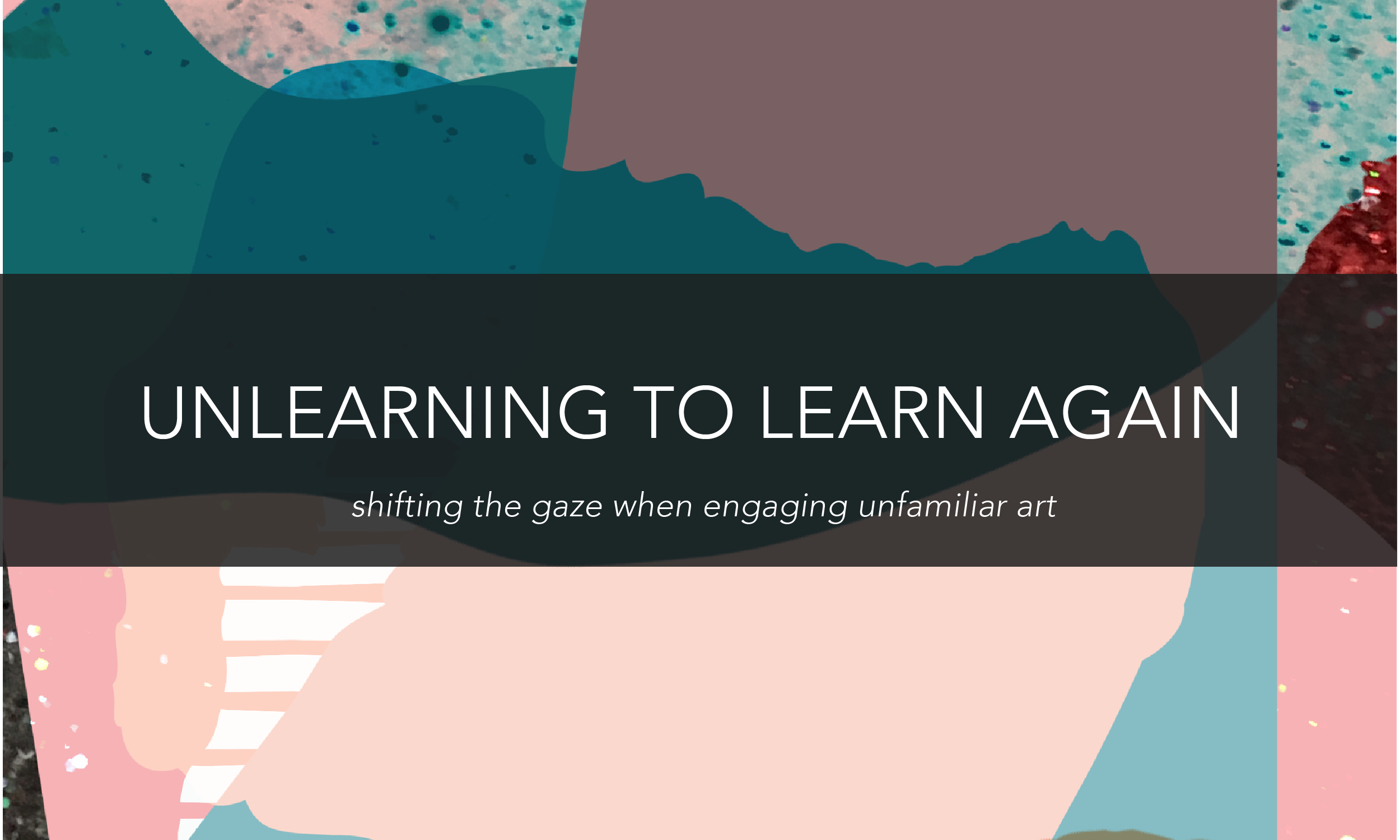Unlearning to Learn Again
by Jodi Minnis
As a student of any medium, one should be accustomed to professors and lecturers encouraging them to engage in the work of other artists as much as possible. En route to achieving my first degree, I was advised to make it a point, during and in between class times, to visit galleries and museums to discover varying practices and solutions to problems that may occur within my work. One suggestion a past professor made that still resonates with me to date is to take time to look at the work critically - dissect the work’s formal and aesthetic qualities while pinpointing the historic references. He said one must mull over the work, question the things they dislike about it rather than become distracted by the parts they like. I found this suggestion to be odd, but useful.
Through investigating the parts of an artwork not understood or “liked”, a journey into the appreciation of those difficult areas begin.
The first time I was given this advice was on a field trip to the National Art Gallery of The Bahamas to view a past permanent exhibition. Though the name escapes me, the work within the exhibition left me feeling perplexed.
With a pair of fresh and naive eyes, I approached the contemporary artwork reluctantly. “Butcher Block” by Kendra Frorup, a piece within this specific exhibition, stirred an uneasiness within once my eyes flowed to the bottom of the work and saw the bronzed chicken feet. While meandering around the other parts of the exhibition, other artworks proved difficult to digest as well. The refusal to comprehend as well resulted in me thinking to myself casually and arrogantly, “I can do this too”. But my dismal of the pieces that took too long to resonate unearthed an insecurity I had about my lack of knowledge of art history, and the ways in which art can be defined.
Before moving further, one must understand that the ability to comprehend all contemporary art comes through reading and discussing philosophies that ordinarily occur within formal classroom settings. This would mean the expectation that anyone can automatically understand and scrutinize art of any form would reinforce the underbelly of classism that exists within the art world today. With this understanding, galleries and museums typically provide texts that help visitors to digest and contextualize the exhibited works. Curatorial statements also provide an entry way into the exhibition to guide viewers through the space; and if one becomes lucky, the exhibition will feature artist statements and quotes to bring the artists’ original intent closer to the fore.
Freshman Jodi had no understanding of this and disregarded all of the text. So, during a post-mortem with the entire class, I expressed my “dislike” to my professor, who would quickly ask me to explain how and why I came to this conclusion. Unsurprisingly, I had no substantial evidence to support my claim.
The way in which I thought art should be formed and presented was challenged. I stood confident in my previous knowledge of how to experience art; but later learned that in order for me to garner more appreciation and expand my experience, I had to learn new ways of seeing and engaging. I had to gain more insight to go beyond the likes and dislikes.
Investigating my interests and disinterests helped to cultivate a vocabulary of ideas and methods that I would want to use and even opt not to within my practice. Giving myself the space to ingest new artists, new information and new practices proved resourceful and useful in ways I couldn’t even imagine. Although not everything I understand, I enjoy, I have valid and supported reasons as to why those things do not fit within my vocabulary. However, “Butcher Block” by Kendra Frorup is one of my favorite works of art now, and I would recommend anyone follow her practice.







Perhaps it was the journalist in me that drew a particular fascination towards obtaining a deeper level of understanding of this marginalized yet very special and sacred community to me, to shed light on its history in The Bahamas? Or maybe it was my longing for wanting to have this discussion on the origins (if any) of #Pride in The Bahamas? Whatever the reason, I especially aimed to sit before an OG activist, properly obtain ‘newfound’ information and render the discussion on page to not only gain a greater appreciation from whence we’ve come, but also a new perspective on the way forward in solidarity.